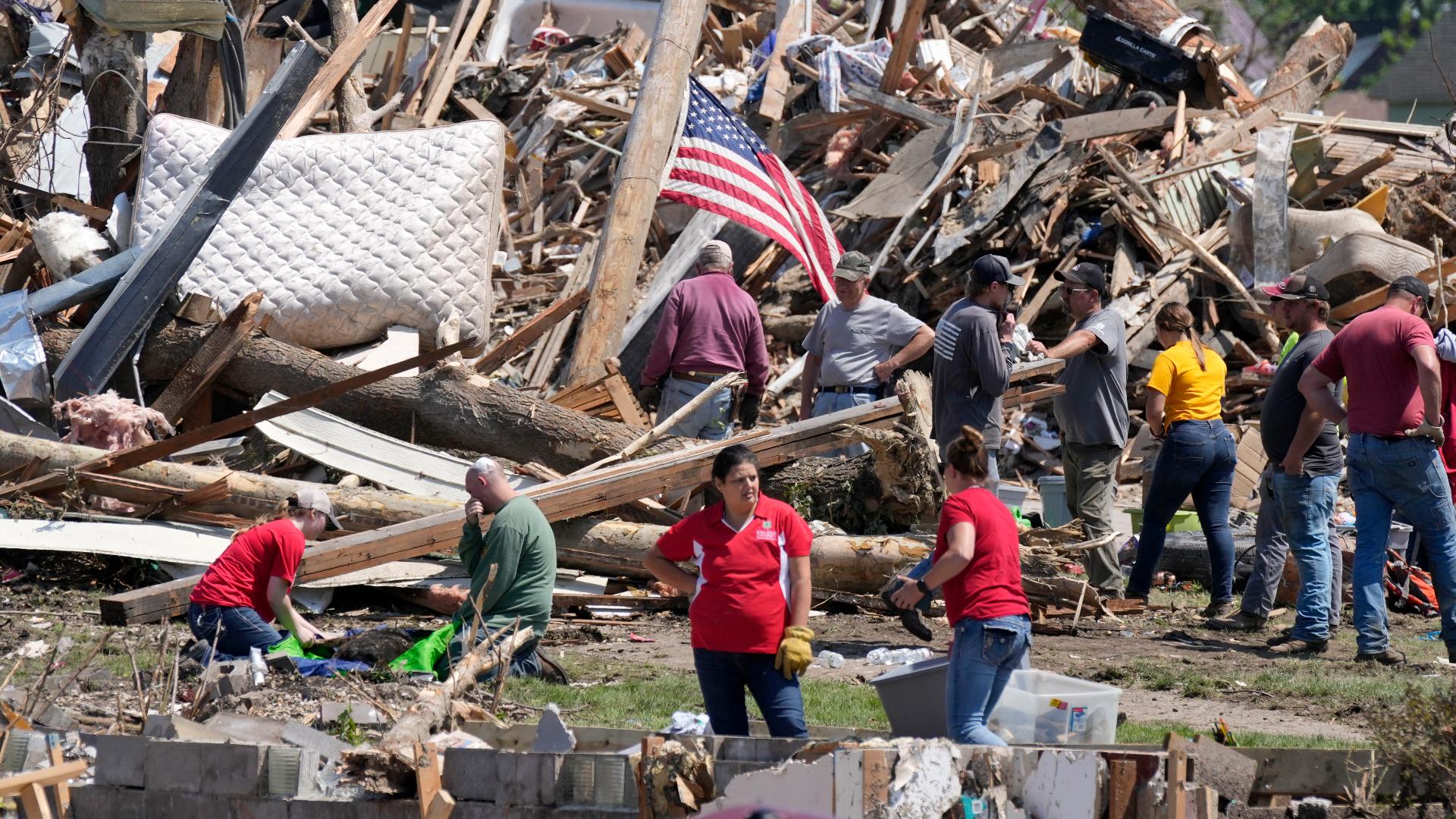Greenfield, Iowa Tornado

The Greenfield, Iowa tornado was a devastating F5 tornado that struck the town of Greenfield, Iowa, on May 3, 1947. The tornado caused extensive damage to the town, killing 17 people and injuring over 100. It is considered one of the most powerful tornadoes in Iowa history.
The tornado touched down near the town of Fontanelle, Iowa, at 6:30 pm CST and traveled northeast for 20 miles (32 km) before lifting near the town of Casey, Iowa. The tornado was on the ground for a total of 45 minutes and reached a maximum width of 1 mile (1.6 km).
The tornado caused widespread damage to the town of Greenfield. The town’s courthouse, school, and many businesses were destroyed. Over 200 homes were damaged or destroyed, and many residents were left homeless.
The Greenfield tornado was one of the most destructive tornadoes in Iowa history. It caused extensive damage to the town of Greenfield and killed 17 people. The tornado is a reminder of the power of nature and the importance of being prepared for severe weather.
Historical Significance
The Greenfield tornado is significant for several reasons. First, it was one of the most powerful tornadoes ever recorded in Iowa. Second, it caused extensive damage to the town of Greenfield, killing 17 people and injuring over 100. Third, the tornado occurred at a time when tornadoes were not well understood, and it helped to raise awareness of the dangers of these storms.
The Greenfield tornado is a reminder of the power of nature and the importance of being prepared for severe weather. It is also a reminder of the resilience of the human spirit. The people of Greenfield rebuilt their town after the tornado, and they continue to thrive today.
Table of Key Details
| Detail | Value |
|—|—|
| Date | May 3, 1947 |
| Strength | F5 |
| Path length | 20 miles (32 km) |
| Maximum width | 1 mile (1.6 km) |
| Duration | 45 minutes |
| Estimated wind speeds | Up to 300 mph (480 km/h) |
| Deaths | 17 |
| Injuries | Over 100 |
Tornado Science and Meteorology

Greenfield iowa tornado rating – The formation and behavior of tornadoes are complex meteorological phenomena that have fascinated and perplexed scientists for centuries. To fully understand the devastating impact of the Greenfield tornado, it is essential to delve into the science behind its creation and the ongoing efforts to predict and mitigate these destructive forces.
The genesis of a tornado lies in the interplay of atmospheric instability and specific environmental conditions. When warm, moist air from the Gulf of Mexico collides with cold, dry air from the north, a boundary forms known as a dryline. This boundary acts as a trigger, initiating the formation of thunderstorms that can evolve into supercell thunderstorms, the parent clouds of tornadoes.
Types of Tornadoes
Tornadoes are classified into different types based on their appearance and intensity. The most common type is the conical tornado, characterized by its funnel-shaped cloud extending from the base of the thunderstorm to the ground. Waterspouts, tornadoes that form over water, are also conical in shape. Rope tornadoes, on the other hand, are narrow and elongated, resembling a rope hanging from the cloud base. The rarest and most destructive type is the stovepipe tornado, which appears as a solid column of rotating air with a well-defined, cylindrical shape.
Tornado Forecasting and Warning Systems
Advances in meteorological science have led to significant improvements in tornado forecasting and warning systems. Doppler radar, a key tool in tornado detection, can measure wind speeds and directions within a storm, providing valuable information about its rotational intensity and potential for producing a tornado. Numerical weather prediction models, utilizing vast amounts of data and sophisticated algorithms, can simulate atmospheric conditions and predict the likelihood and path of tornadoes hours in advance.
Warning systems, such as the National Weather Service’s Tornado Warning System, disseminate timely alerts to communities in the path of an approaching tornado. These warnings are issued based on radar data and spotter reports, giving people crucial minutes to seek shelter and take protective actions.
Community Resilience and Recovery: Greenfield Iowa Tornado Rating

In the face of devastation, the community of Greenfield, Iowa, demonstrated remarkable resilience and unity. In the aftermath of the tornado, stories of heroism, compassion, and unwavering spirit emerged, serving as beacons of hope amidst the wreckage.
Local organizations and volunteers played a pivotal role in providing immediate aid and support to those affected. The Greenfield Community Center became a central hub, offering shelter, food, and emotional solace to displaced residents. Volunteers from across the state poured in, offering their time and skills to help with cleanup efforts and provide much-needed assistance.
Long-Term Recovery Strategies, Greenfield iowa tornado rating
Beyond the immediate response, the community embarked on a long-term recovery plan focused on rebuilding and infrastructure improvements. The city council worked closely with local businesses, residents, and federal agencies to secure funding and implement sustainable solutions.
- Rebuilding efforts prioritized the construction of safe and resilient homes, schools, and public buildings. The community also invested in green infrastructure, such as storm water management systems, to mitigate the impact of future weather events.
- Infrastructure improvements included upgrades to roads, bridges, and utilities. The city also implemented new building codes and zoning regulations to ensure future structures met higher safety standards.